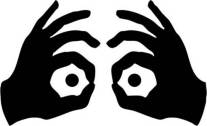Umpiring Tips
Only Call What You See
An important principle of umpiring is “you only call what you see”. Examples:
- On a very close play on a runner, if you did not see an out, then by definition the runner has to be called safe.
- On a pitch that could have been a strike or ball, if you didn’t see the strike, then by definition it has to be called a ball.
I had a game recently where I had a very close play on a runner at 2B. I don’t think I was ready for such a quick throw from the shortstop and hesitated longer than usual before making my call. I thought – did I see an out? I could not say that I did, so I called him safe. I got some groans from the coaches on defense (who wanted an out). They felt pretty sure of themselves, that he was safe, as I would expect them to. Emotion plays a big part in how people see things. I might have been wrong to call him safe, but felt comfortable that I made the only call I could – I was looking for an out and didn’t see it.
Using the “only call what you see” principle is key to accepting your call and learning to move on.
Back to: Umpiring Tips


